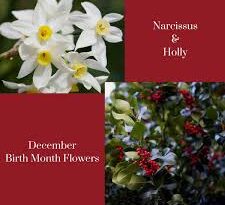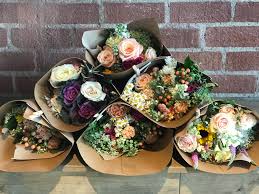Significance and Uses of Moth Orchid Flowers
Moth orchids, scientifically known as Phalaenopsis, are stunningly beautiful and popular among flower enthusiasts worldwide. These exquisite flowers are named after the moth-like appearance of their petals, which have an ethereal and delicate charm. Moth orchids belong to the family Orchidaceae and are native to Southeast Asia, including countries like the Philippines, Indonesia, and Malaysia.
With their captivating allure, moth orchids have become one of the most sought-after ornamental plants, both for seasoned gardeners and those new to the world of indoor gardening. Their enchanting colors range from pure whites, soft pinks, vibrant purples, and even rare yellows, making them a versatile and elegant addition to any living space.
Moth orchids are known for their long-lasting blooms, making them a favorite among flower enthusiasts. A well-cared-for moth orchid can produce flowers that last for several months, bringing joy and beauty into homes and gardens year-round. Their ability to thrive indoors under the right conditions, such as indirect light and moderate humidity, makes them an excellent choice for indoor plant enthusiasts.
With a little patience and attention, moth orchids can bloom repeatedly, delighting you with their breathtaking flowers year after year.
In addition to their aesthetic appeal, moth orchids also hold symbolic significance. They are often associated with love, beauty, and elegance, making them popular choices for wedding bouquets and decorations during special occasions.
In addition, moth orchids are more than just flowers; they are delicate masterpieces that add grace and charm to any setting. Their enduring beauty, coupled with their adaptability to indoor environments, makes them a perfect choice for plant enthusiasts of all levels. So, whether you’re a seasoned gardener or just starting your green journey, welcoming a moth orchid into your home is sure to bring joy and beauty to your life.
Read Also: Most Beautiful Flowers: All You Need To Know About
History and Significance of Moth Orchid

The history of moth orchids (Phalaenopsis) dates back centuries and is intertwined with the fascinating world of orchid exploration and cultivation. Here’s a glimpse into the rich history and significance of these delicate beauties:
Moth orchids were first discovered in the early 18th century by European explorers who ventured into the lush rainforests of Southeast Asia. The honor of the orchid’s discovery is often attributed to the famed botanist and explorer, Karl Ludwig Blume, who encountered these captivating flowers during his travels in the Dutch East Indies (now Indonesia). Blume’s discovery ignited a fascination with orchids, leading to their introduction to Europe and later to other parts of the world.
The 19th century witnessed a period of “orchid mania” in Europe, particularly in Victorian England. Orchids, including moth orchids, became a symbol of luxury, refinement, and exotic beauty. Wealthy collectors competed to acquire rare and exotic orchids from far-flung corners of the globe, driving up prices to astronomical levels. Orchid enthusiasts, known as “orchid hunters,” embarked on perilous journeys to remote jungles in search of new and unique species to satisfy the demand.
Moth orchids, with their captivating and elegant appearance, became a focal point for plant hybridization efforts. Expert horticulturists and botanists began crossing different species and varieties of moth orchids to create new hybrids with a range of colors, patterns, and sizes. These hybridization efforts have led to the vast array of moth orchid varieties available today, making them even more popular among plant enthusiasts.
Throughout history, orchids, including moth orchids, have held various symbolic meanings across different cultures. In ancient Greece, orchids were associated with fertility and virility. In Chinese culture, orchids represent love, beauty, and refinement, making them a favorite subject in traditional Chinese paintings. In many Asian cultures, orchids also symbolize prosperity and good fortune.
As orchid hunting and habitat destruction threatened several orchid species, including moth orchids, there emerged a growing concern for their conservation. Organizations and botanical gardens around the world dedicated themselves to the preservation and protection of these rare and beautiful flowers. Efforts have been made to propagate orchids through sustainable methods and protect their natural habitats to ensure their survival for future generations.
Moth orchids have become one of the most popular and widely cultivated orchids globally. Their striking appearance, long-lasting blooms, and relative ease of care have contributed to their popularity as a favorite indoor plant. Moth orchids have found a special place in homes, offices, and various events, including weddings and celebrations, adding elegance and beauty to any setting.
However, the history and significance of moth orchids are deeply rooted in the exploration of the natural world, human fascination with beauty, and efforts to preserve nature’s wonders. From their discovery in Southeast Asia to becoming cherished houseplants around the globe, moth orchids continue to captivate and enchant plant enthusiasts, symbolizing love, beauty, and refined elegance. Their enduring popularity and cultural significance ensure that these delicate beauties will remain a cherished part of horticulture and human admiration for many years to come.
Uses of Moth Orchid

Moth orchids (Phalaenopsis) have various uses and applications, extending beyond their beauty and ornamental value. Here are some of the main uses of moth orchids:
1. Ornamental Plant:
The primary and most widespread use of moth orchids is as an ornamental plant. Their stunning and elegant flowers make them popular choices for indoor and outdoor decoration. Moth orchids are commonly used as potted plants, adding a touch of grace and beauty to homes, offices, hotels, and various events like weddings, parties, and corporate functions.
2. Cut Flowers and Floral Arrangements:
Moth orchids are also used as cut flowers for floral arrangements. Their long-lasting blooms make them an excellent choice for bouquets and vase displays. Florists often incorporate moth orchids into mixed arrangements to add sophistication and a focal point to the design.
3. Gifts and Presents:
Due to their symbolic meanings of love, beauty, and refinement, moth orchids are popular gifts on various occasions. Whether it’s a birthday, anniversary, or a gesture of appreciation, gifting a potted moth orchid or a bouquet can convey heartfelt sentiments.
4. Science and Research:
Moth orchids, like many other orchid species, have been subjects of scientific research. Scientists study orchids to understand their biology, genetics, and ecology. Orchids are known for their complex and fascinating reproductive mechanisms, making them valuable models for botanical research.
5. Hybridization and Breeding:
Moth orchids are extensively hybridized and bred to produce new varieties with different colors, patterns, and characteristics. Expert horticulturists and breeders use moth orchids as parent plants to create unique hybrids, which are then propagated and made available to the public.
6. Herbal Medicine and Traditional Uses:
In some cultures, certain orchid species, including moth orchids, have been used in traditional medicine for various purposes. Although not as common as other medicinal plants, some orchids have been believed to possess healing properties or used in remedies for specific ailments.
7. Conservation and Biodiversity:
Moth orchids and other orchid species play a crucial role in biodiversity and ecological balance. Conserving their natural habitats and protecting orchid populations helps preserve the delicate ecosystems they are a part of, supporting other plant and animal species that depend on these environments.
8. Aesthetic Inspiration:
Beyond their physical uses, moth orchids, like other flowers, serve as a source of inspiration for artists, poets, and writers. Their delicate beauty, graceful shapes, and ethereal appearance have inspired various art forms throughout history.
Overall, moth orchids enrich our lives through their ornamental beauty, cultural significance, and scientific value. Whether adorning our living spaces, contributing to scientific knowledge, or simply bringing joy through their charm, these delicate beauties continue to captivate and hold a special place in the hearts of many.
Read Also: Bouqs Flowers: All You Need To Know About
Lady Slipper Orchid

The Lady Slipper Orchid, belonging to the Paphiopedilum genus, is a captivating and unique group of orchids that have captured the hearts of orchid enthusiasts and plant lovers around the world. Named after their distinctive pouch-shaped lip, resembling a slipper or shoe, these orchids are renowned for their exquisite beauty and intriguing floral structure.
The most striking feature of the Lady Slipper Orchid is its pouch-like lip, called the labellum or “slipper.” This slipper-shaped structure serves a functional purpose by acting as a trap for pollinators, enticing them to enter and subsequently exit through a narrow opening, thus facilitating pollination. The pouch may come in various shapes, colors, and patterns, depending on the species and hybrid variety.
The rest of the flower consists of a sturdy stem with one or more large, vibrant, and often intricately patterned petals and sepals, which serve as the backdrop to the central slipper-like lip. Lady Slipper Orchids can display a broad range of colors, including shades of pink, white, green, yellow, and maroon.
The Lady Slipper Orchids are found in various regions across the world, including Asia, North America, and parts of Europe. They typically grow in shaded, forested areas, often among leaf litter, moss, or rocks. Their natural habitats vary widely, from temperate to subtropical and montane regions, reflecting the diverse conditions in which they can thrive.
Cultivating Lady Slipper Orchids can be a rewarding endeavor, though they require specific care due to their unique growth habits. Here are some essential care tips for these enchanting plants:
1. Light: Lady Slipper Orchids prefer filtered, indirect light. They are well-suited for east or north-facing windowsills, where they can receive bright, indirect sunlight without being exposed to direct rays.
2. Watering: Proper watering is crucial for Lady Slipper Orchids. They prefer to stay moderately moist but not soggy. Allow the potting mix to partially dry between waterings, but avoid letting it completely dry out.
3. Humidity: These orchids require moderate to high humidity levels, similar to their natural forest habitats. Using a humidifier or placing a tray of water near the plants can help maintain the necessary humidity.
4. Potting Medium: Lady Slipper Orchids have specific preferences for their potting medium. A well-draining mix, typically composed of bark, sphagnum moss, and other suitable materials, mimics their natural environment and ensures the health of their root system.
5. Temperature: Lady Slipper Orchids generally thrive in temperate to warm conditions, with daytime temperatures ranging from 65°F to 80°F (18°C to 27°C) and nighttime temperatures slightly lower.
Some species of Lady Slipper Orchids are considered endangered or vulnerable due to habitat loss, overcollection, and illegal trade. It is essential to support conservation efforts and follow responsible practices when acquiring and cultivating these orchids to help protect their natural populations.
In conclusion, the Lady Slipper Orchid is a mesmerizing and enchanting group of orchids that captivates plant enthusiasts with its unique floral structure and diverse color variations. Their allure lies not only in their visual appeal but also in their intriguing ecological adaptations. As we continue to appreciate and cultivate these remarkable plants, it is vital to contribute to conservation efforts and sustainable practices to ensure the survival and preservation of these botanical treasures for generations to come.
Read Also: Step-by-Step Guide: How to Build and Install DIY Shutters









